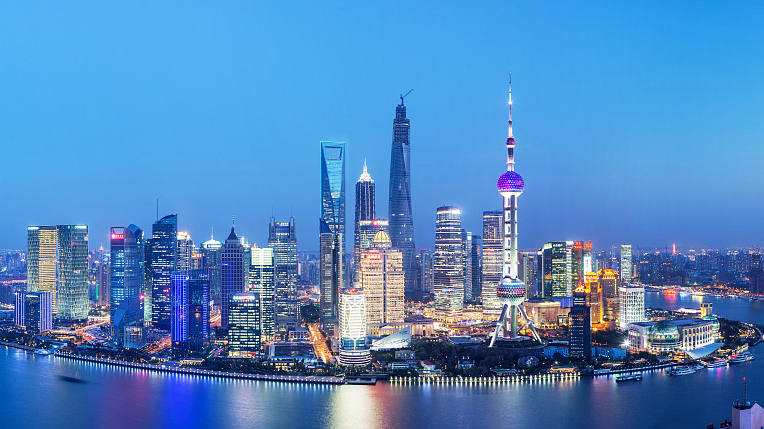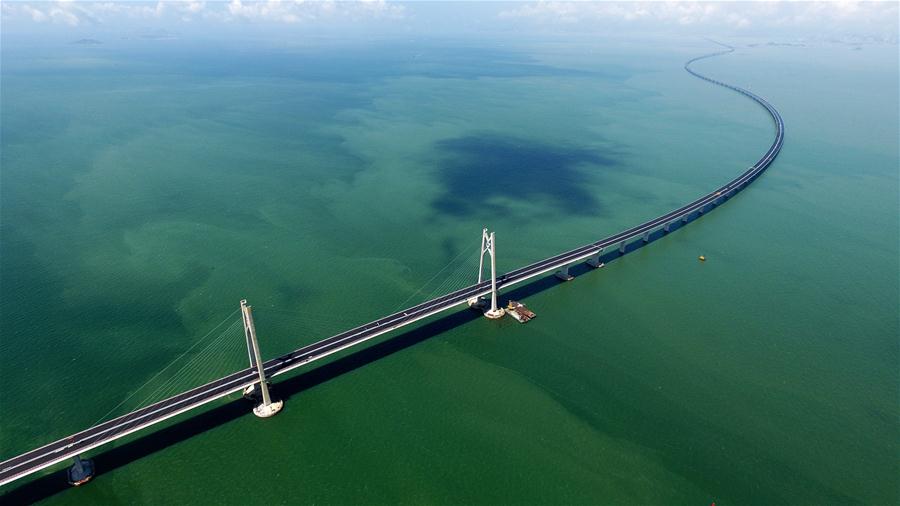
Editor's note: Matteo Giovannini is a finance professional at the Industrial and Commercial Bank of China in Beijing and a member of the China Task Force at the Italian Ministry of Economic Development. The article reflects the author's views, and not necessarily those of CGTN.
There are indicators that every good economist needs to periodically observe in order to understand the status of an economy, especially the so-called "economic fundamentals" such as GDP growth rate, inflation rate and unemployment rate, that are known as the most basic macroeconomic indexes.
However there is another important indicator that serves to evaluate the strength of an economy and this is the Fortune magazine's yearly list of 500 largest global companies measured by revenues that has the purpose on one hand to rank the quality as well as prestige of companies of a country and on the other hand to show how the global business is evolving by giving a picture of any relevant shift in the world's balance of power.
Last year's edition of the Fortune Global 500 was important for the fact that, for the first time since the American magazine started to publish its famous ranking in 1990 and probably since the end of World War II when America came out as the undisputed global leading power, another nation was able to reach parity with the United States.
The 2020 edition of the Fortune Global 500, published early this week, is even more relevant because it unveiled that the growth trajectory of China's weight on the global stage shows no sign of stopping. At present, a total of 124 Chinese companies, including those from the Chinese mainland and Hong Kong, are included on the list while for the first time the United States has declined to 121 from 126 of last year.
The first aspect to consider is that this year's result is even more important considering that when the Global 500 list first came out in the 90s there were no Chinese companies present on the list while after three decades, as a result of breakneck economic growth, Chinese economy now accounts for nearly 20 percent of global GDP according to the International Monetary Fund and its weight and relevance on the international scene has drastically changed.
In this regard, the change in leadership is not an unexpected event and it didn't happen overnight. As a matter of fact, there has been a long-running trend where the number of American companies on the list has been on a steady decline since 2002 while Chinese companies have increased every year since 2003.

Photo taken on June 6, 2017, shows the construction site of the Hong Kong-Zhuhai-Macao Bridge in the Lingdingyang waters, south China. /Xinhua
Photo taken on June 6, 2017, shows the construction site of the Hong Kong-Zhuhai-Macao Bridge in the Lingdingyang waters, south China. /Xinhua
Another important aspect to underline is that 83 out of 124 Chinese companies in the Fortune 500 list are located in the Greater Bay Area, accounting for nearly 17 percent of companies on the whole list. This result is particularly significant because it reflects the efforts of the Chinese central government to develop the region. According to HSBC, the Greater Bay Area is home to about 70 million people, accounts for 12 percent of the country's GDP and is going to play a pivotal role in China's future development.
The ranking also reflects a long-wished achievement for China fulfilling the dream of having its best companies' success recognized by a prestigious American magazine, providing Chinese firms with the opportunity to operate as China's official "ambassadors" around the world.
Critics could argue that a ranking based on corporate revenues and not on profitability is simply the result of the Chinese market size and population and not of a real global footprint or that most of the Chinese companies that stand at the top of the list are state-owned enterprises (SOEs) in the banking and energy sectors, sometimes labeled as inefficient behemoths.
It would be an understatement to say that China's reliance on the world's biggest market and on the world's largest population are the only reasons for its success. Following China's admission into the World Trade Organization in 2001, and the later "Going Global Strategy" and the "Belt and Road Initiative," China's domestic companies have been offered the opportunities and the tools to extend their reach well beyond Chinese border. These major economic steps have also created the conditions for China's future economic development.
The relevance of Chinese SOEs in traditional sectors is starting to get balanced out by a growing presence of private internet companies such as Alibaba, Tencent, JD.com and Xiaomi Group, and it is not impossible to predict that in the near future, as a result of the important technological progress of the country and of the growing potential of the digital economy in a post-COVID-19 world, Chinese tech companies will possibly replace the SOEs in the top spots of the list.
In this sense, the Fortune Global 500 list that has represented for three decades the world's best snapshot of the state of global businesses, does not only display a list of companies in terms of a defined metric this year, but also the effects of an ongoing rebalancing of power from the West to the East against the backdrop of ever- rising tensions between the world's two largest economies.
(If you want to contribute and have specific expertise, please contact us at opinions@cgtn.com.)